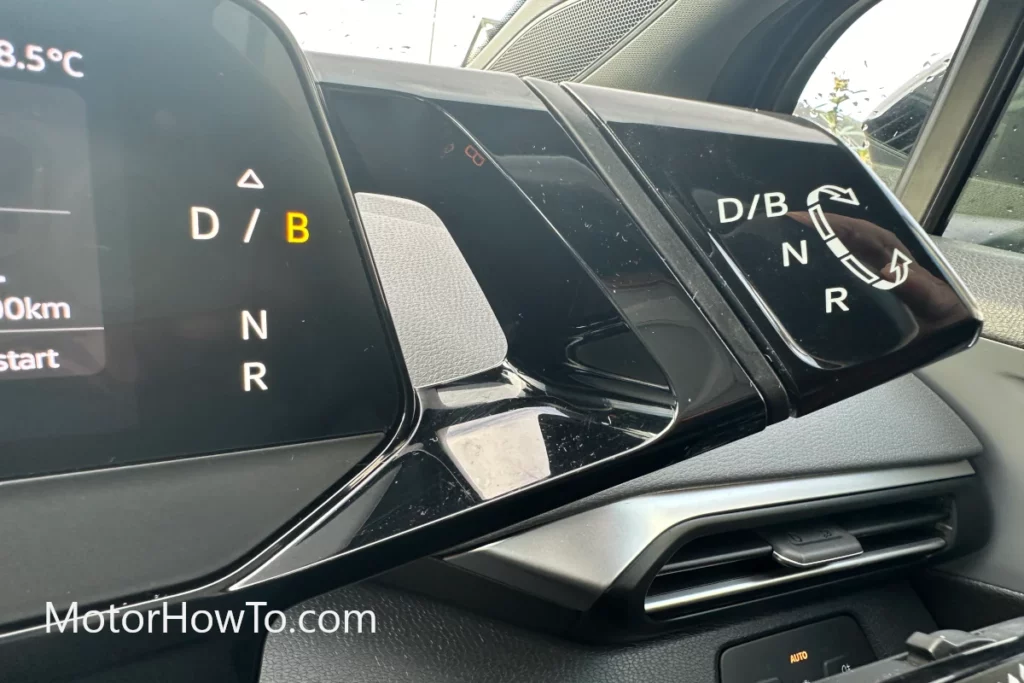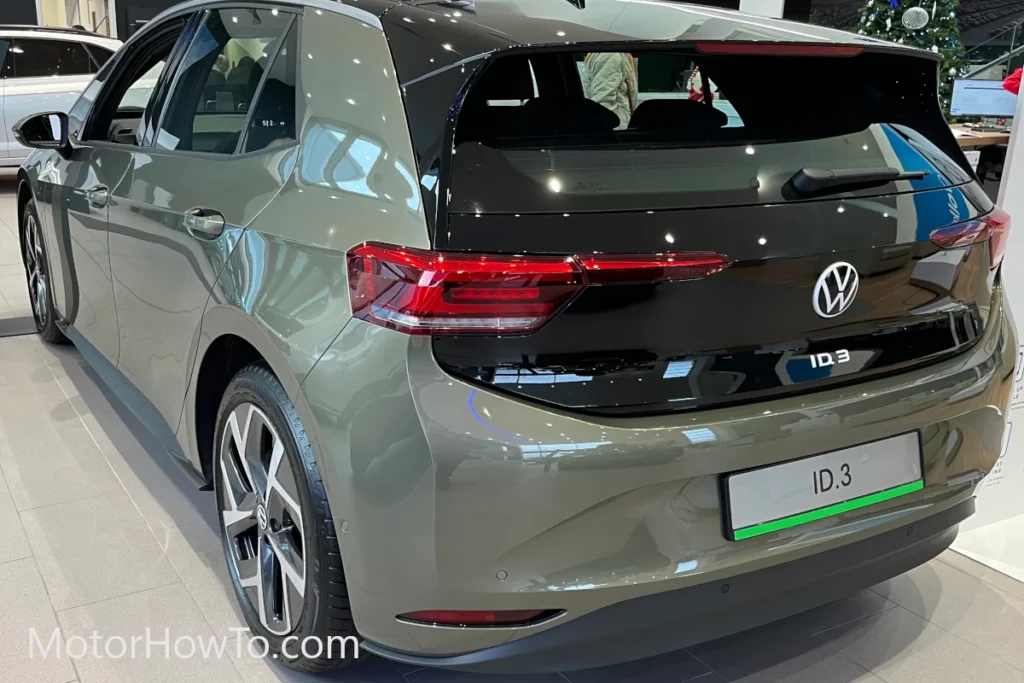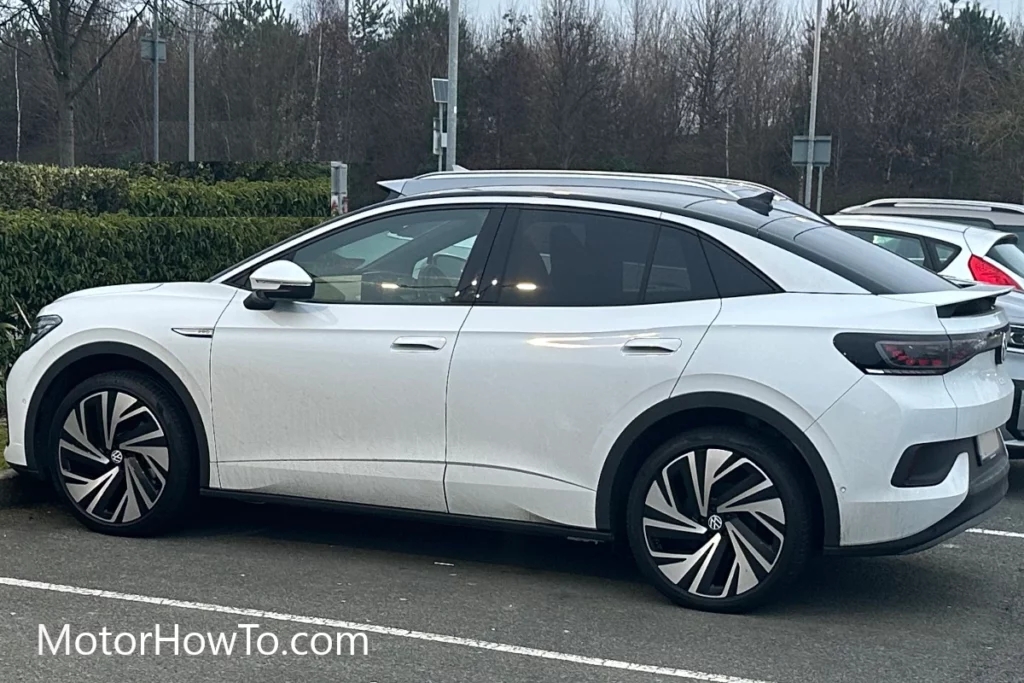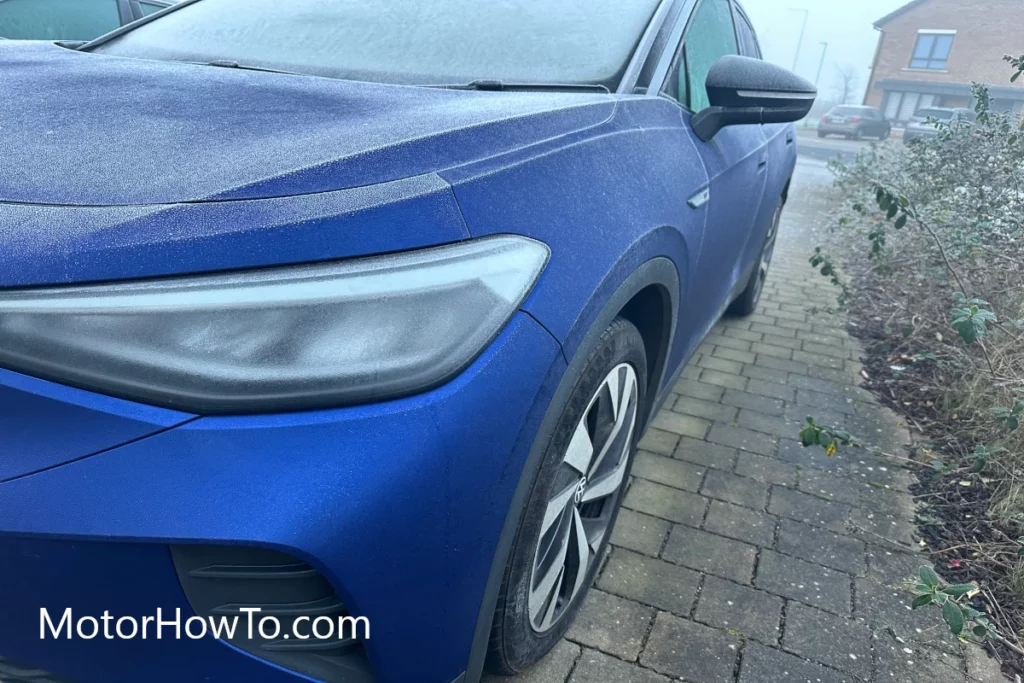The emergence of regenerative braking technology marks a significant leap forward in the evolution of electric vehicles (EVs), and Volkswagen’s ID series is at the forefront of this innovation.
With its integration into the VW ID, regenerative braking enhances vehicle efficiency and elevates the overall driving experience.
This technology cleverly harnesses the energy typically lost during braking, transforming it into a tool for increased sustainability and performance.
The VW ID series showcases how regenerative braking can be ingeniously used to set new standards in the electric vehicle (EV) market.
Regenerative braking in the Volkswagen ID series captures the kinetic energy released during braking. This energy, which would otherwise be wasted, is converted into electrical power and fed back into the vehicle’s battery. This process extends the vehicle’s driving range, improves energy efficiency, and reduces the wear and tear on traditional brake systems. It embodies a smart combination of energy conservation and innovative technology, making the VW ID not just an electric vehicle but a testament to the future of sustainable automotive engineering.

As we explore further, the article will provide a comprehensive understanding of regenerative braking in the VW ID, from the basic principles to its real-world applications.
We will examine the technical aspects that make this system efficient and user-friendly and discuss how it contributes to the overall driving experience.
Additionally, insights from experts and comparisons with traditional braking systems will offer a deeper perspective on the significance of regenerative braking in the evolution of electric vehicles.
Related:
- Why Turn Off Regenerative Braking? (Read First)
- Will EV Allow Use Of Regenerative Braking To Slow Down? (Explained)
- What Does The Green Car Symbol Mean? (Explained For Beginners)
- Why Can’t Electric Vehicles Use Total Regenerative Braking? (Answered)
The Role of Regenerative Braking in Enhancing VW ID’s Efficiency
Regenerative braking is pivotal in enhancing the efficiency of Volkswagen’s ID series, a line of electric vehicles designed for the modern era.
At its core, this technology redefines the concept of energy utilization in automobiles, particularly in the context of electric vehicles (EVs).
Unlike traditional braking systems that dissipate kinetic energy as heat, regenerative braking in the VW ID captures this energy and converts it into electrical power.
This conversion process is crucial in supplementing the vehicle’s battery charge and extending its range.
The efficiency gains from regenerative braking are significant. In urban environments, where stop-and-go driving is common, the VW ID effectively recaptures a substantial amount of energy that would otherwise be lost.
This not only conserves power but also means less frequent charging is required, enhancing the overall convenience and usability of the vehicle.
Moreover, the reduced reliance on the conventional braking system lowers maintenance costs and prolongs the lifespan of the brake pads and discs.
Furthermore, the integration of regenerative braking in the VW ID is seamlessly tied to the vehicle’s drive system.
Drivers can often control the intensity of the regenerative braking through different driving modes or paddle shifters, allowing for a customized driving experience that balances efficiency and personal preference.
This adaptability is a testament to Volkswagen’s commitment to delivering eco-friendly vehicles and ones that cater to drivers’ diverse needs and comforts.
The role of regenerative braking in the VW ID series is a technical enhancement and a philosophical shift in automotive design.
It demonstrates how efficiency and environmental consciousness can be harmoniously blended with performance and driver satisfaction, setting a new benchmark in electric vehicles.
Comparative Analysis: Regenerative Braking vs. Traditional Braking Systems
The automotive world has seen a significant transformation with the introduction of regenerative braking systems, particularly in electric vehicles like the Volkswagen ID series.
This shift represents a fundamental change from traditional braking systems used in gasoline-powered vehicles.
To fully grasp the implications and advancements of this technology, it’s essential to compare and contrast regenerative braking with traditional braking systems.
By examining their operational principles, energy efficiency, environmental impact, and maintenance requirements, we can uncover the nuanced differences and advantages that set these two systems apart.
Comparative Analysis:
Energy Conversion and Efficiency:
- Traditional Braking: Converts kinetic energy into heat through friction, leading to significant energy loss.
- Regenerative Braking: Captures kinetic energy during braking and converts it into electrical energy, enhancing overall vehicle efficiency.
Maintenance and Longevity:
- Traditional Braking: Incurs regular wear and tear, requiring frequent maintenance and part replacement.
- Regenerative Braking: Reduces wear on friction-based components, leading to lower maintenance needs and longer lifespan.
Environmental Impact:
- Traditional Braking: Generates brake dust and doesn’t utilize kinetic energy, contributing to a higher environmental footprint.
- Regenerative Braking: Minimizes brake dust and optimizes energy use, offering a more environmentally friendly approach.
Driving Experience:
- Traditional Braking: Provides a consistent and familiar braking feel.
- Regenerative Braking: Offers a unique driving experience with potential for one-pedal driving and adjustable braking intensity.
The comparative analysis between regenerative and traditional braking systems reveals a clear evolution in automotive technology.
Regenerative braking, as seen in the VW ID series, enhances energy efficiency, contributes to environmental sustainability, and reduces maintenance requirements.
This technology signifies a move towards more intelligent, eco-friendly, and cost-effective vehicle designs, aligning with the growing global emphasis on sustainability.
As the automotive industry continues to evolve, adopting regenerative braking systems is likely to play a crucial role in shaping the future of transportation.
Impact of Regenerative Braking on Vehicle Range and Performance
Regenerative braking has a profound impact on the range and performance of electric vehicles, with the Volkswagen ID series serving as a prime example of this technology’s potential.
This innovative system fundamentally alters how energy is managed and utilized in electric vehicles, leading to notable enhancements in driving range and vehicle dynamics.
Extended Driving Range:
Regenerative braking significantly contributes to extending the driving range of electric vehicles.
Recapturing energy that would otherwise be lost during braking and converting it into electrical power effectively recharges the battery while the vehicle is in motion. This process is particularly advantageous in stop-and-go traffic and urban driving conditions, where frequent braking occurs.
As a result, the VW ID can travel longer distances on a single charge, reducing the need for frequent stops at charging stations and enhancing the overall convenience for the driver.
Improved Vehicle Performance:
The incorporation of regenerative braking also influences the performance characteristics of electric vehicles. In the VW ID, this system allows for smoother deceleration and can be adjusted to suit the driver’s preferences, ranging from aggressive energy recapture to a more gentle braking experience.
This adjustability customizes the driving experience and contributes to the vehicle’s overall efficiency.
Additionally, the reduced reliance on traditional friction brakes reduces wear and tear, ensuring more consistent performance over the vehicle’s lifespan.
Enhanced Energy Efficiency:
Beyond extending range and refining performance, regenerative braking enhances the overall energy efficiency of electric vehicles.
The VW ID achieves higher energy efficiency than electric vehicles without this technology by maximizing available kinetic energy.
This efficiency is beneficial for the individual vehicle and contributes to the broader goal of reducing energy consumption and minimizing the environmental footprint of transportation.
In conclusion, the impact of regenerative braking on the range and performance of electric vehicles like the VW ID is multifaceted.
It extends the practical usability of these vehicles by increasing their range and elevates the driving experience through improved performance and enhanced energy efficiency.
As electric vehicle technology continues to advance, the role of regenerative braking is set to become even more integral in shaping the future of sustainable transportation.
Future Trends: The Evolution of Regenerative Braking in Electric Vehicles
The future of regenerative braking in electric vehicles (EVs) is poised for significant advancements, shaping the technology and broader landscape of sustainable transportation.
As seen in models like the Volkswagen ID, regenerative braking has already substantially impacted. However, its evolution is expected to encompass various dimensions, from enhanced efficiency and integration with other vehicle systems to new user interfaces and smarter energy management.
Integration with Autonomous Technology:
One of the most exciting prospects is the integration of regenerative braking with autonomous driving technology.
As self-driving cars become more prevalent, the precision of regenerative braking systems can be significantly improved.
Autonomous vehicles with advanced sensors and algorithms can optimize regenerative braking, predicting and adjusting to driving conditions more effectively than a human driver.
This synergy could lead to even greater efficiency and smoother driving experiences.
Advancements in Energy Storage and Management:
The evolution of regenerative braking is also closely tied to advancements in battery technology and energy management systems.
Future electric vehicles may feature more sophisticated battery systems that can store and release energy more efficiently, maximizing the benefits of regenerative braking.
Moreover, innovations in energy management software will likely enable more precise control over how and when the energy from regenerative braking is used, further enhancing vehicle range and performance.
User Interface and Customization:
Another development area is the user interface and the degree of customization available to drivers regarding regenerative braking.
Future electric vehicles might offer more intuitive and user-friendly interfaces that allow drivers to easily adjust the level of regenerative braking to suit their driving style and conditions.
This customization could extend to programmable settings based on specific routes or driving scenarios, ensuring optimal efficiency and comfort.
Broader Application and Standardization:
As the technology matures, we can expect to see regenerative braking become a standard feature in a wider range of electric vehicles, from economy models to luxury cars.
This broader application will make EVs more appealing to a wider market and contribute significantly to global efforts to reduce carbon emissions and conserve energy.
The future of regenerative braking in electric vehicles is a landscape of innovation and integration.
As this technology continues to evolve, it will play a crucial role in defining electric vehicles’ efficiency, performance, and environmental impact.
The advancements in this field will benefit drivers in terms of range and experience and contribute to the overarching goals of sustainable and intelligent transportation solutions.
Source
Regenerative Braking vs. Coasting: Volkswagen ID.4 Gets It Right
Coasting Or Regenerating? For The VW ID.4, The First Is More Efficient



